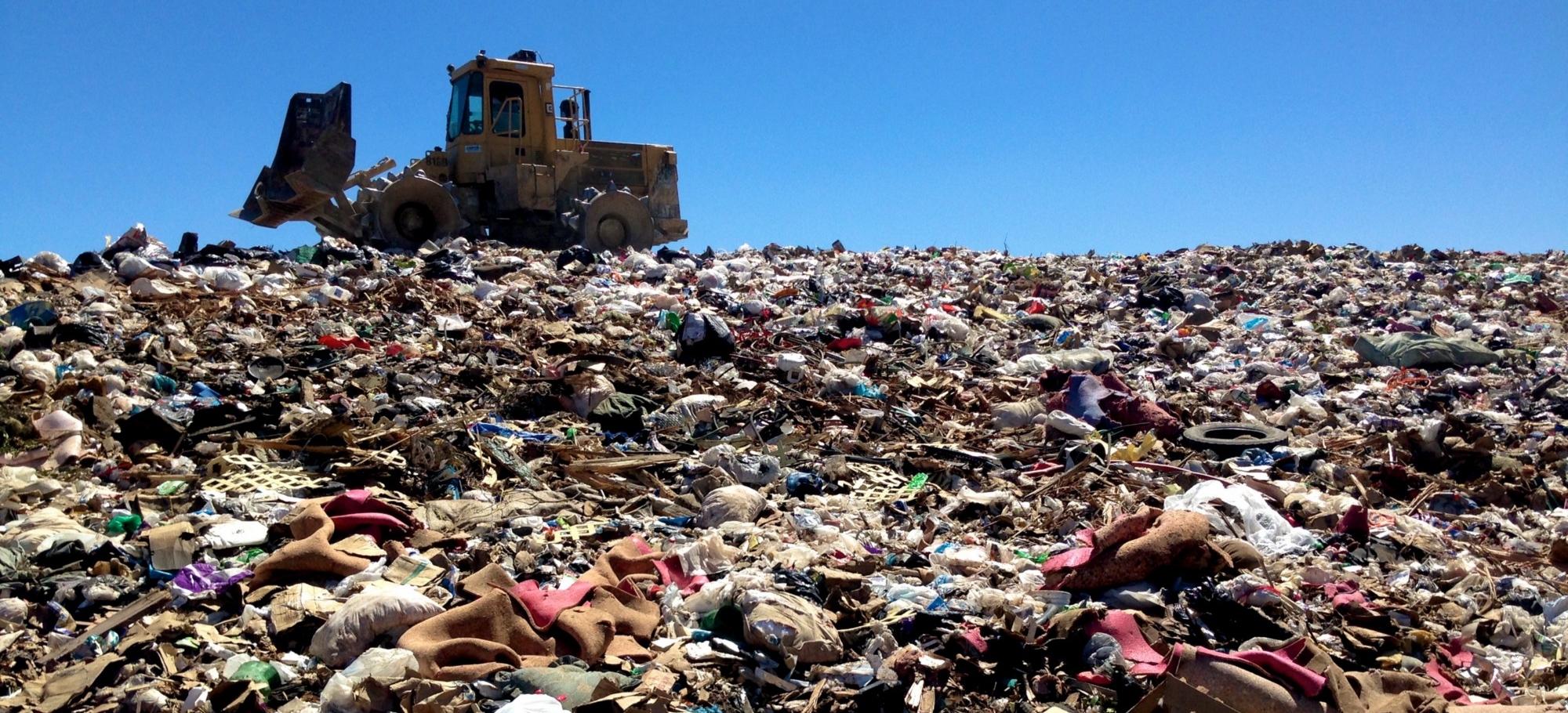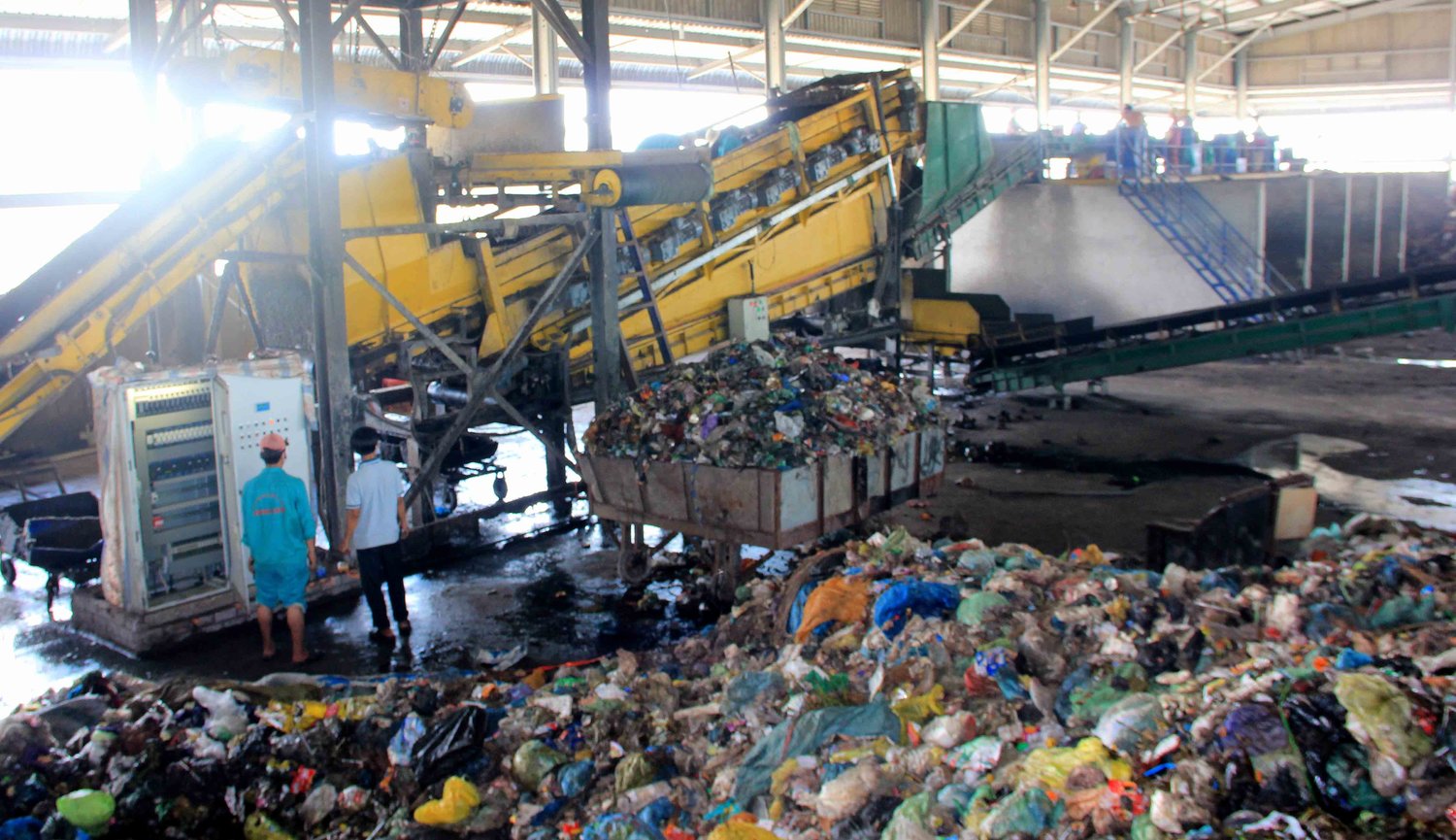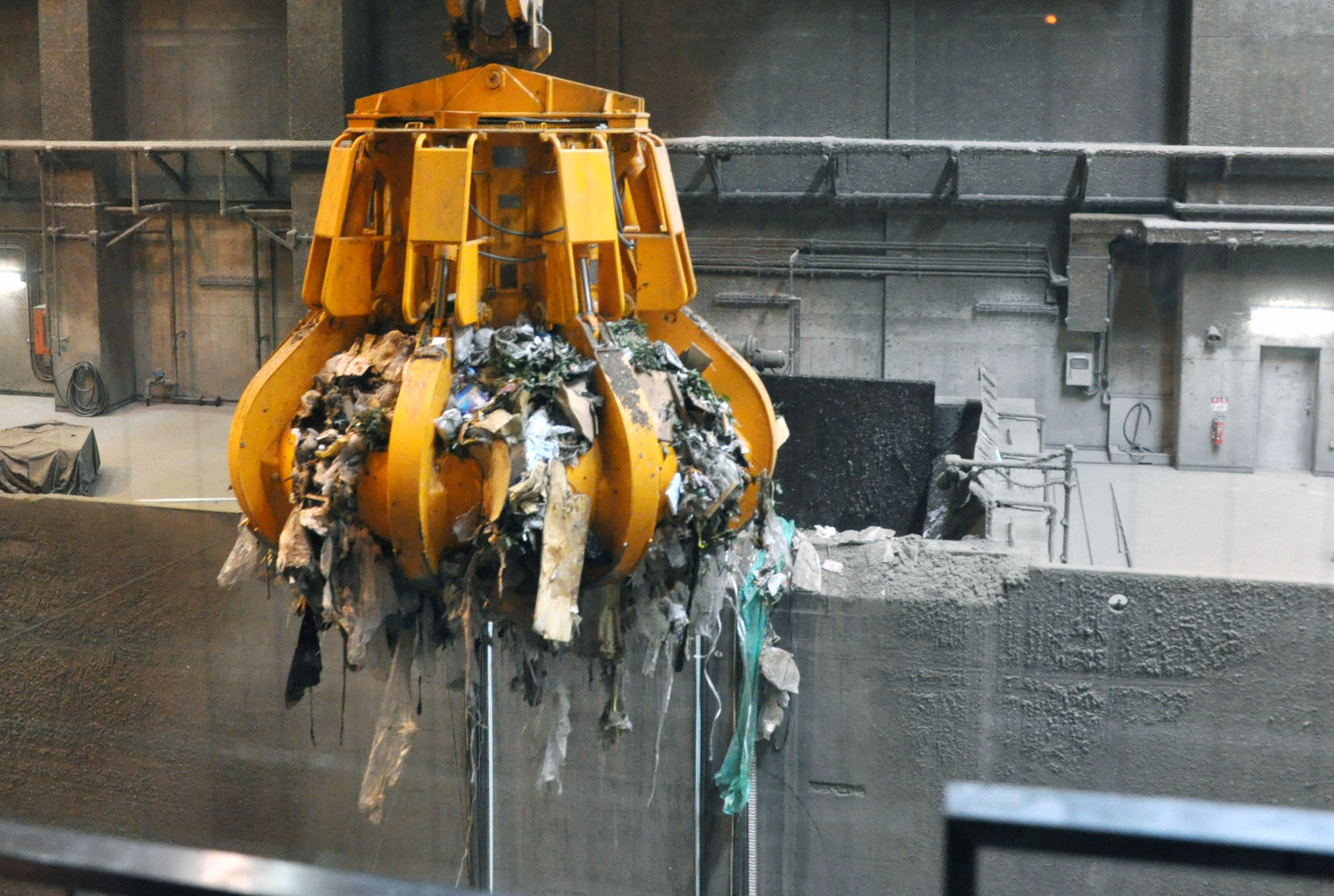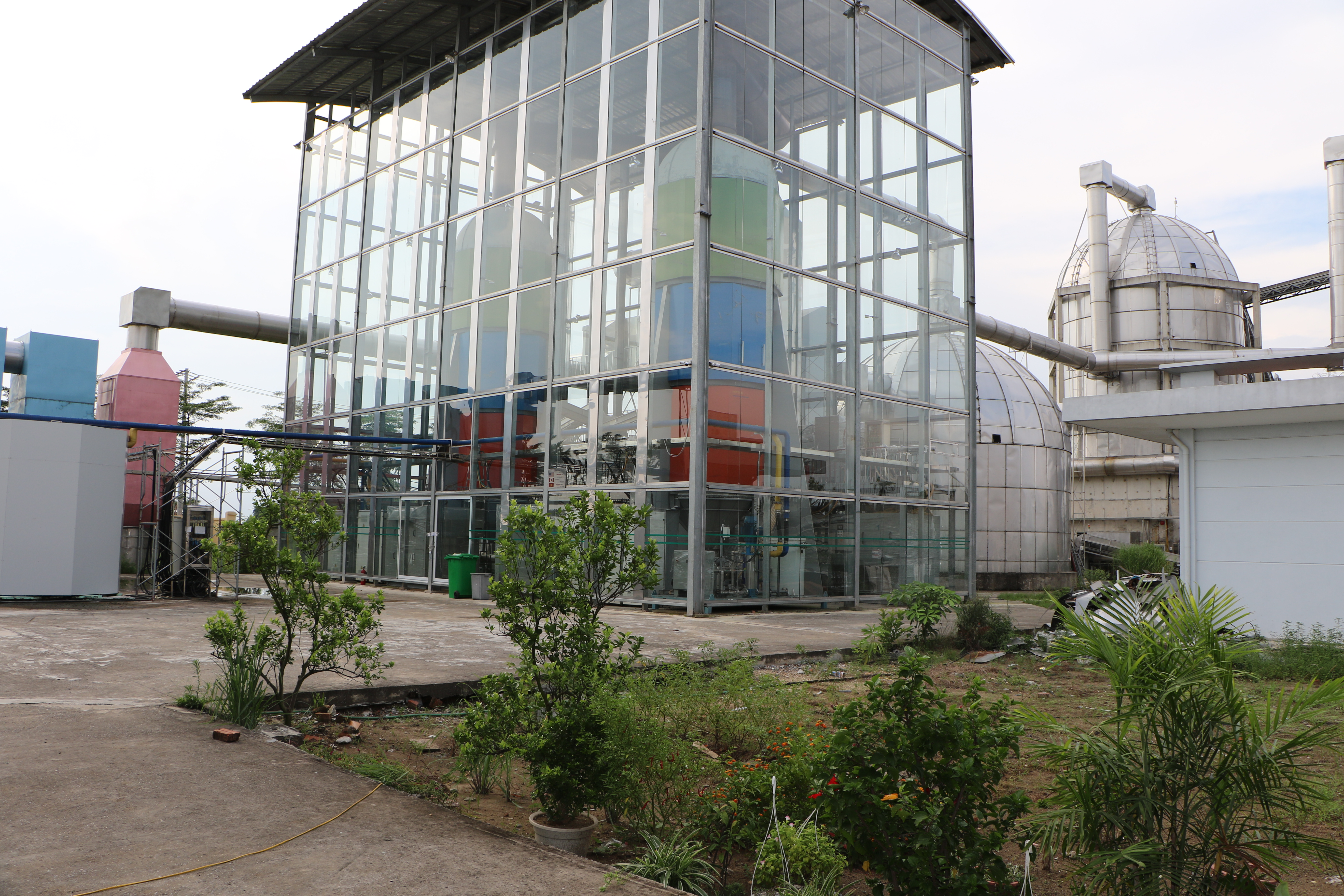
Garbage burial is no longer suitable
Every day in Ho Chi Minh City, there are 8,900 tons of domestic solid waste, 5,000 tons of which is transferred to Da Phuoc for burial. After 11 years of operation, Da Phuoc has buried 13 million tons of garbage with a height of 27m – more than a quarter of the expected amount of garbage (24 million tons) of the landfill.
Recently, when the southwest wind blew strongly, the stench of the landfill spread to Phu My Hung and surrounding areas, making people unable to live. This is a problem that experts and managers in Ho Chi Minh City are having a headache to find a solution to.
According to Mr. Nguyen Toan Thang, Director of the Department of Natural Resources and Environment, garbage disposal by burying cannot avoid the smell.

Therefore, in addition to overcoming the smell by ways such as increasing the spray of chemicals, arranging the processing time and receiving time in a reasonable way, do not focus on one time to reduce the odor. It is also necessary to quickly find an alternative waste treatment technology.
According to history, burial is the first and oldest method of solid waste treatment of mankind, applied since 320 BC. However, nowadays, burying waste is considered low-quality, when it is very outdated and inefficient.
In the world, waste is also a problem causing a lot of trouble. But there are also countries with great success in waste management, such as Sweden, Austria, Belgium and Japan.
Sweden – The country that has to import garbage for treatment
The amount of waste that needs to be buried in Thuy Dien is only about 1%. The remaining 47% is recycled and 52% is burned to produce heat and electricity.
50% of Sweden's electricity consumption comes from renewable energy. They set up a garbage incineration network to collect electricity and connect to the national electricity grid.
In the cold winter, they also have a garbage incineration network arranged in each district, to transfer heat and heat to each household.
To meet this huge "demand for garbage", the people of Sweden have been following a very scientific waste separation process, since the 1970s.
However, the amount of domestic waste is still not enough, Sweden also has to import garbage from other countries. In 2015, they imported 1.5 million tons of garbage, and it is predicted that in 2020 they will import 2.3 million tons of garbage.
This is a smart policy, Sweden not only makes good use of "junk resources", but also gets paid by neighboring countries to "use" household garbage.
Austria - The country that recycles waste with advanced biotechnology
Austria is a small country that has done great things in waste management. The most prominent in the Austrian waste treatment system is biotechnology to recycle PET plastic.
While the whole world is struggling with plastic waste - the current PET recycling solution is either burning or crushing, which has very poor quality after recycling. An Austrian company has developed a high-tech solution that uses a fungal enzyme to recycle PET plastic. Under the action of enzymes, PET plastic will be broken down into molecules and then can be easily converted back into high-quality plastic.
Along with many other advanced technologies, Austria, Belgium and Germany are currently the 3 most efficient recycling countries in the world.
Belgium – The country with a waste management system from before it is discharged
75% of Belgian waste is reused, recycled or composted – the highest number in the world. Their resources seem to be reused forever.
They have 2 extremely advanced waste management processes: Ecolizer and Green Events.
Ecolizer is a web-based system for managing production, ensuring low and clean waste. The system calculates production, transportation, consumption, energy and waste processes, enabling manufacturers to assess the environmental impact of their products.
From there, it proposes improvements in the process and in product design, reducing negative consequences for the environment.
With just a small change in the design, we can reduce the amount of materials and waste significantly. For example, when you need to carry a cup of coffee to go, using a T-shaped plastic bag will save and protect the environment several times more than a regular plastic bag. And when the amount of coffee cups reaches several million, the amount of plastic needed to produce and release into the environment will be greatly reduced.
Green Events is also a web management system similar to Ecolizer, but for events. The system helps assess the amount of waste an event can generate, ways to reduce waste during the event, and even a list of places to rent reusable cutlery.
They do everything to reduce waste in the bud.
Japan - The most efficient waste incinerator country
Compared to European countries, Japan is not a leader in waste recycling. But they are the leading country in garbage classification and effective waste treatment.
Japan's waste is managed very in-depth. Derived from people's sense of sorting garbage, and dumping garbage in the right place. Until thoroughly incinerating waste with CFB (Liquid Bed Fluidized Combustion Technology) technology.
This technology treats garbage by burying garbage in a layer of sand, then uses air flow during the kiln firing process, along with some other chemicals to destroy garbage. The garbage inside the oven will be continuously convection, and will be destroyed in a very short time, even the most stubborn materials.
Not only that, this technology also helps reduce emissions such as NO and NO2 a lot, with a cheaper price than other types. The amount of heat after combustion is also used to produce electricity.
Not too fussy, complicated and very effective, so now there are many countries around the world importing this technology from Japan such as China, Thailand, and Singapore.
What experience for us?
First of all, we have to see that the common point of effective waste treatment countries comes from the people's sense of sorting garbage, and dumping it in the right place. Without this awareness, any garbage disposal technology is useless. Since its construction, Da Phuoc also has a process to recycle waste, but it cannot be used because the input waste is not sorted.
In terms of technology, to imitate European countries, it seems to be quite far. Japan's waste incineration technology is the most feasible method to pursue at present.
According to information from the Department of Natural Resources and Environment, currently Ho Chi Minh City is also prioritizing the transfer of waste treatment from landfill to incineration. The goal is to reduce the amount of waste that is landfilled from 76% to 50% by 2020, and to only 20% by 2025. Although it is not certain which technology will be applied, this has been a great improvement in waste treatment in our country.

Dong Anh garbage factory
Source: https://doimoisangtao.vn/news/2018/7/7/nhng-cng-ngh-x-l-rc-thi-tin-tin-trn-th-gii)








